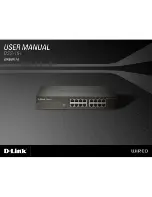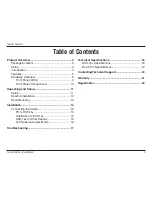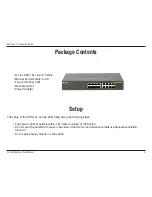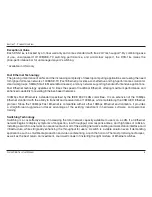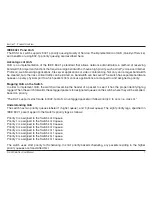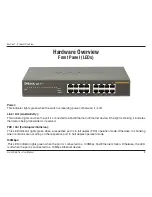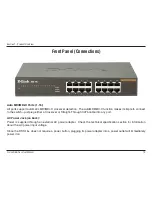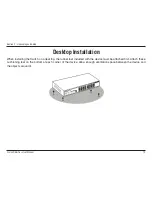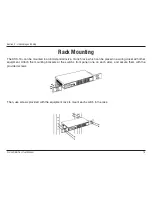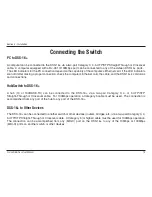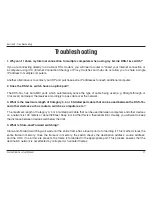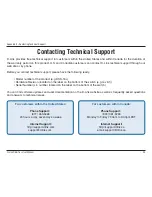
6
D-Link DSS-16+ User Manual
Section 1 - Product Overview
A switch increases capacity and decreases network loading by dividing a local area network into different LAN
segments. Dividing a LAN into multiple segments is one of the most common ways of increasing available bandwidth.
If segmented correctly, most network traffic will remain within a single segment, enjoying the full-line speed bandwidth
of that segment.
Switches provide full-line speed and dedicated bandwidth for all connections. This is in contrast to hubs, which use the
traditional shared networking topology, where the connected nodes contend for the same network bandwidth. When
two switching nodes are communicating, they are connected with a dedicated channel between them, so there is no
contention for network bandwidth with other nodes. As a result, the switch reduces considerably, the likelihood of traffic
congestion.
For Ethernet networks, a switch is an effective way of eliminating the problem of chaining hubs beyond the “two-repeater
limit.” A switch can be used to split parts of the network into different collision domains, making it possible to expand
your Ethernet network beyond the 100-meter network diameter limit for 100BASE-TX networks. Switches supporting
both 10Mbps Ethernet and 100Mbps Fast Ethernet are also ideal for bridging between existing 10Mbps networks and
newer 100Mbps networks.
Switching LAN technology is a marked improvement over the previous generation of network hubs and bridges, which
were characterized by higher latencies. Routers have also been used to segment local area networks, but the cost of
a router, the setup and maintenance required, make routers relatively impractical. Today switches are an ideal solution
to most kinds of local area network congestion problems.
Summary of Contents for DSS-16+
Page 1: ......

